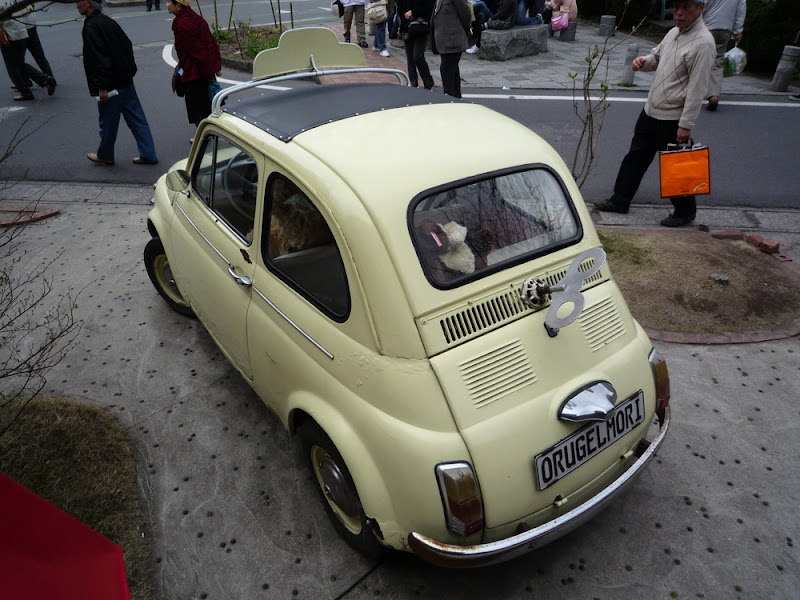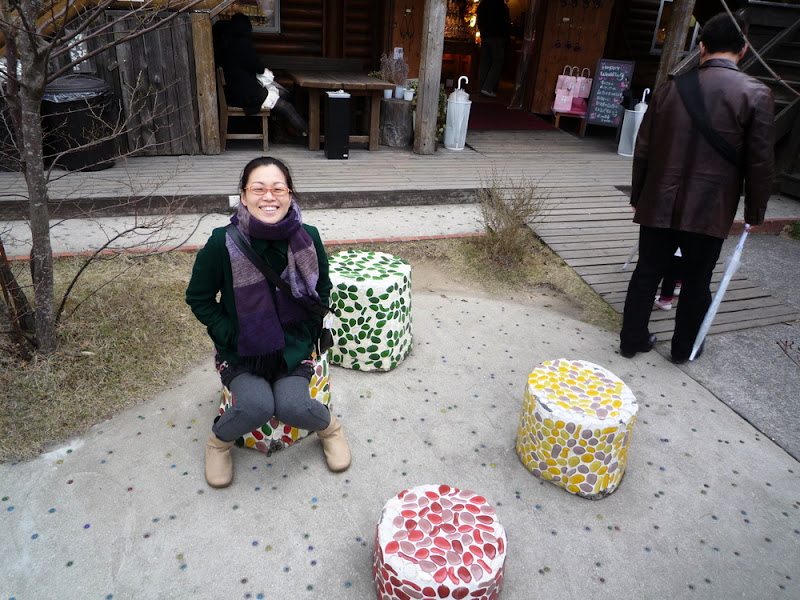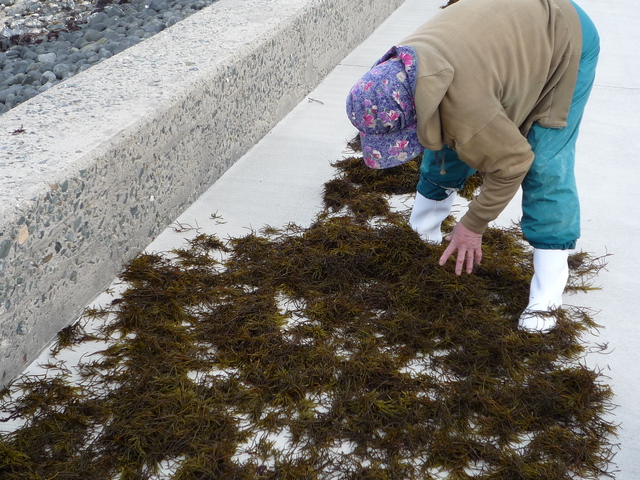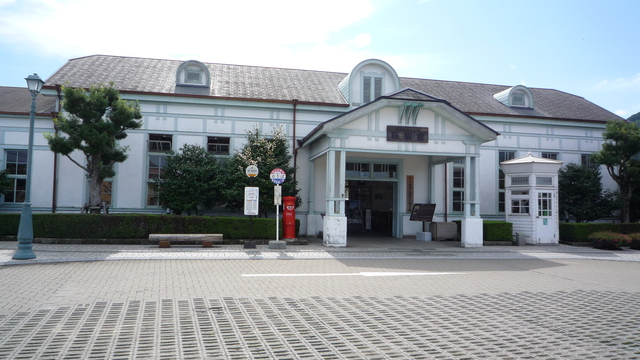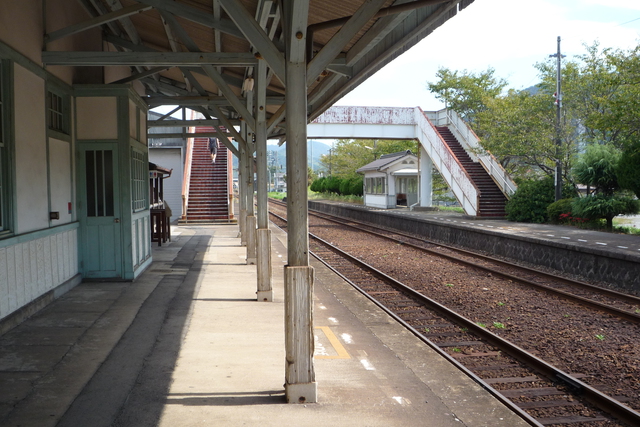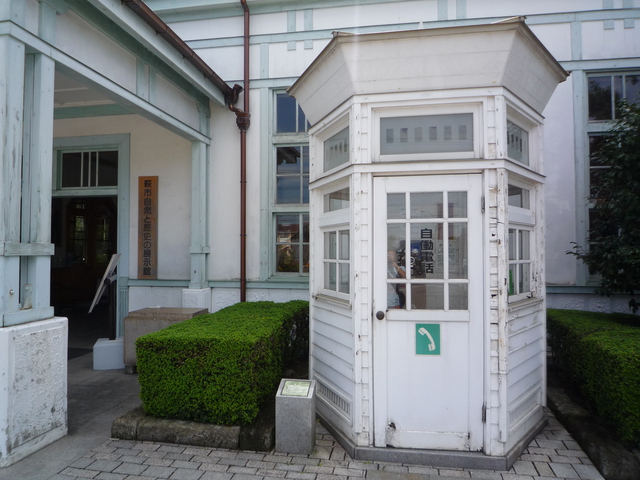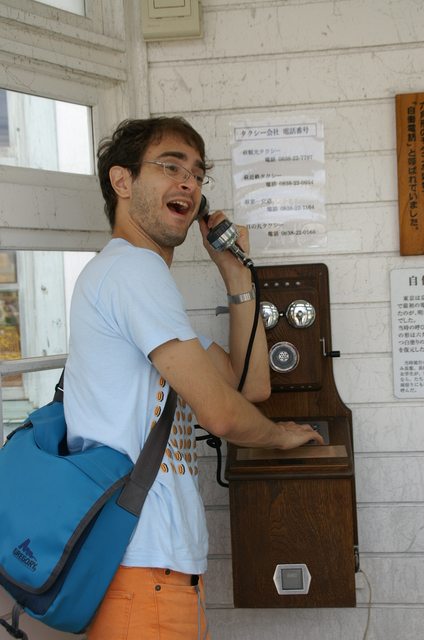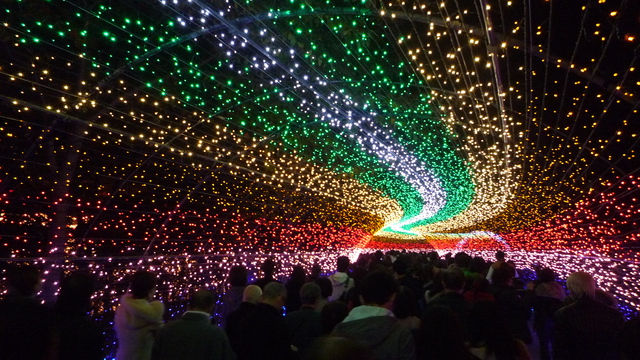
¿Qué es este arco iris traspuesto? Es una atracción en una especie de parque temático de pasear que visité que se llama Nabana no Sato.
この横になった虹は何だろう?この間行ったお散歩テーマパークみたいな場所、なばなの里にあるアトラクションです。
What’s this transposed rainbow? An attraction in a «theme park about walking» I visited, called Nabana no Sato.
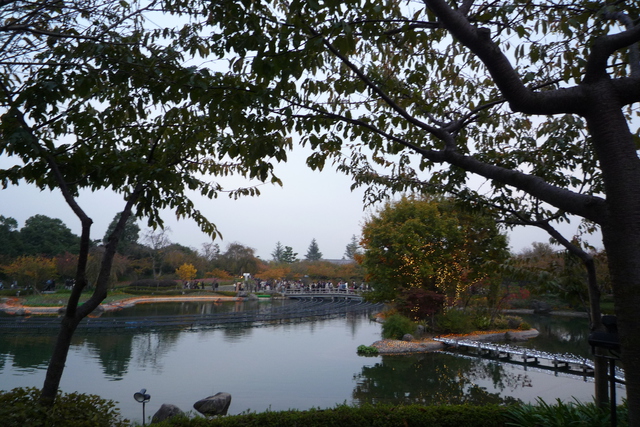
Es un recinto conocido porque de día se puede disfrutar de su variedad botánica y de noche de su espectacular iluminación. Se encuentra en la Prefectura de Mie.
植物の種類がいっぱいで、夜になったらイルミネーションが凄いことで知られてる所です。場所は三重県。
It’s known for the variety of its botanical garden, and at night you can enjoy great illumination. The place is in Mie Prefecture.
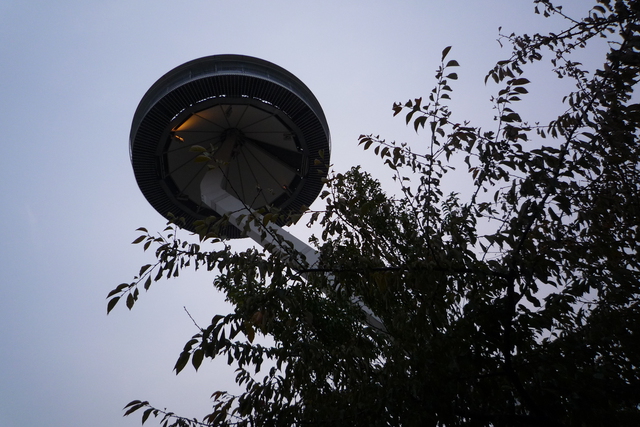
¿Y qué es esto? ¿Un OVNI pinchado en un palo?
で、これは?串焼きになったUFO?
And what’s this? An impaled UFO?
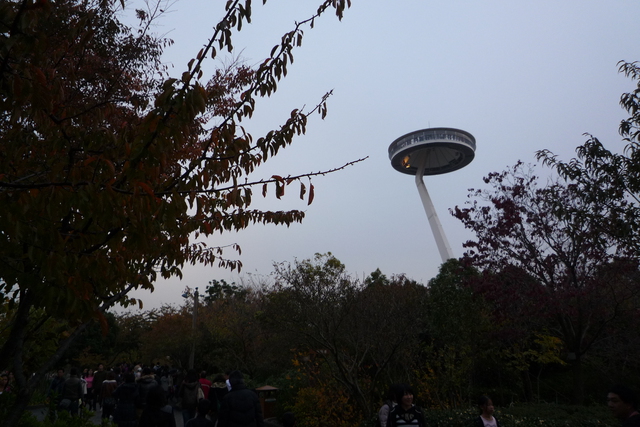
¡No! Es una observatorio «plegable», un «mecha» que sube y baja para cargar y descargar visitantes. Por la cola que había parecía imposible subir aquel día.
「折りたたみ」展望台です!お客さんを拾ったり、おろしたりするのに動く「メカ」です。行列が凄くてあの日は乗れそうになかった。
No! It’s a «folding observatory», a «mecha» that leans down to take in visitors or wave them goodbye. But the line was so long I don’t think I’d been able to ride that day.
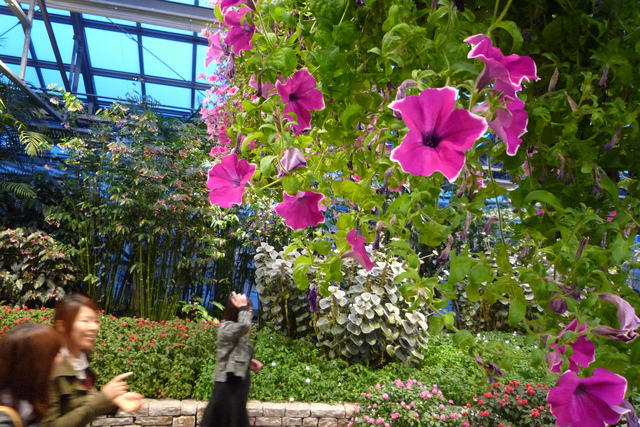
Y este es el extenso jardín botánico.
凄く広い植物園です。
And this is the extensive botanical garden.
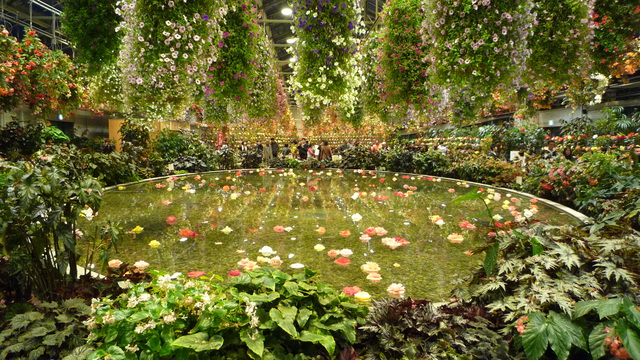
Nunca he visto tanto vegetal distinto junto. Y esta es solo una de las partes del jardín, que se componía de varias estancias y zonas exteriores.
あんなに多い植物の種類は初めて見た。しかし写真に乗ってるのはわずか一部!いろんな部屋や野外にある空間でできた植物園です。
I’d never seen so many different vegetables together. And this is only one part of the garden, which had many rooms and open spaces.
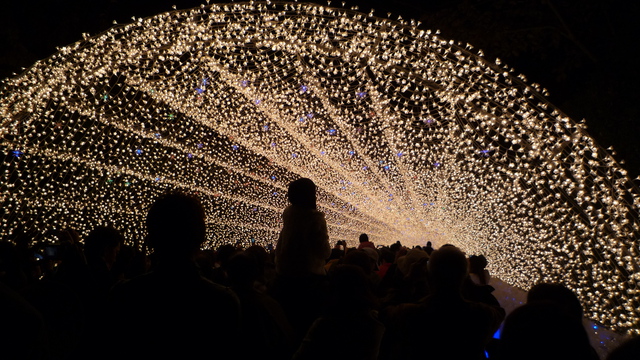
Se hizo de noche y se hizo la luz.
夜が来たら、明るくなった。
Then the night came, and light with it.
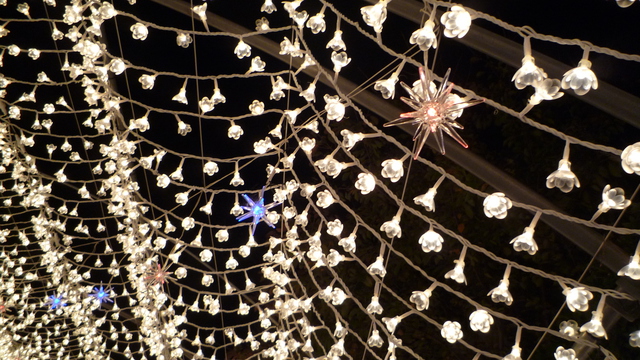
Me pregunto si este sitio sería viable sin LED, con bombillas.
LEDじゃなくて電球だったらこんなのは実現的なのかな?
Would this be reasonable without LEDs, with light bulbs?
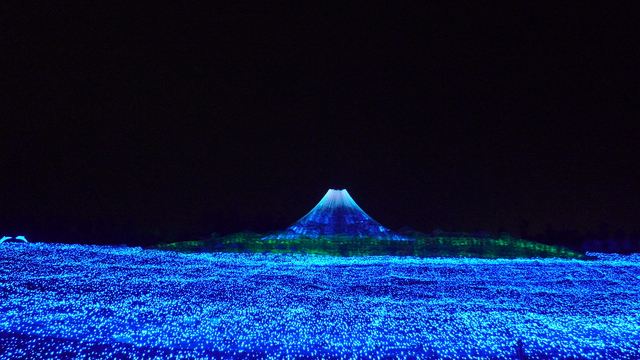
El Falso Fuji de Nabana no Sato. La iluminación está animada, y además de cambiar de color el mar de LED simula olas.
なばなの里の偽富士山。イルミネーションがアニメみたいな感じに色が変わったり、LEDの海に波が出来てた。
Nabana no Sato’s False Fuji. Illumination is animated and, besides everything changing color, the sea of LEDs simulates waves.

Y aquí vemos a un montón de gente, tanta que no se puede caminar. Esto no era por ser el Falso Fuji, sino que fue algo que nos acompañó durante toda la visita. Con lo que se controla en algunos sitios el aforo de los bares, aquí podían calcular un poco la gente que puede haber para que se pueda disfrutar de la visita. Había claramente demasiada gente.
これは凄い人だね。歩けないぐらい。でも偽富士山だからじゃなくてどこでもずっとこのままだった。いろんなところで面積でお店の定員が決まってるように、ここも客の快適さを少しでも考えたらどうかな。明らかに人入れ過ぎだった。
A lot of people, yeah? So many you can’t walk. And it’s not because of the False Fuji –it was something that stuck to us during for the whole visit. Usually pubs limit the number of people that can get in based in the place’s area, and I think they could use that here. There were obviously too many people.
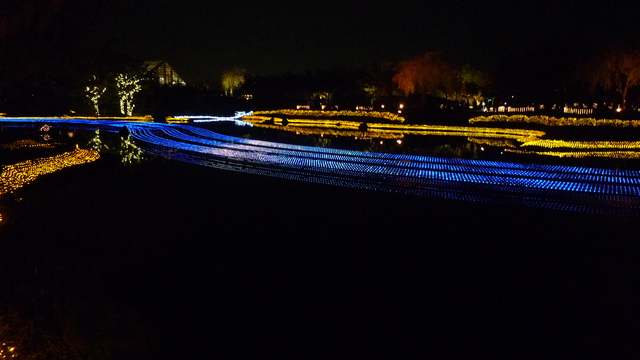
Me lo pasé muy bien porque iba en familia con mis sobrinitas japonesas, pero no volvería a ir si no garantizan una visita cómoda sin empujones. La visita me dejó una cierta sensación de estar en una distopía.
家族で行ったので、姪などがいて楽しかった!でも人に押されたりしない、快適な散歩を保証されない限り、行かないと思う。ちょっとだけディストピアにいるような気持ちになった。
I had a very good time because I was traveling with family and my nieces are super cute, but I wouldn’t come here again unless they can guarantee a comfortable experience. The visit left me with a certain feeling of being inside a dystopia.


